We’re in the back yard. My father in his seventies kneels concentrating in front of the apple tree. “Ember, can you please pass me the level?” My four year old son, Ember, trembles with excitement as he passes the tool to his grandfather. “Is the board straight, Grampa?”
Ember’s 18 month old sister, Peregrine, plays with some unused lumber nearby.
It’s the first sunny day when you can feel spring is definitely here, and my family is building a treehouse. And not just any treehouse… This treehouse has been thirty years in the making. Let me explain. You see, right now we’re living in what was my childhood home, a few floors down from my parents, having returned a couple years ago from a long stint on the east coast.
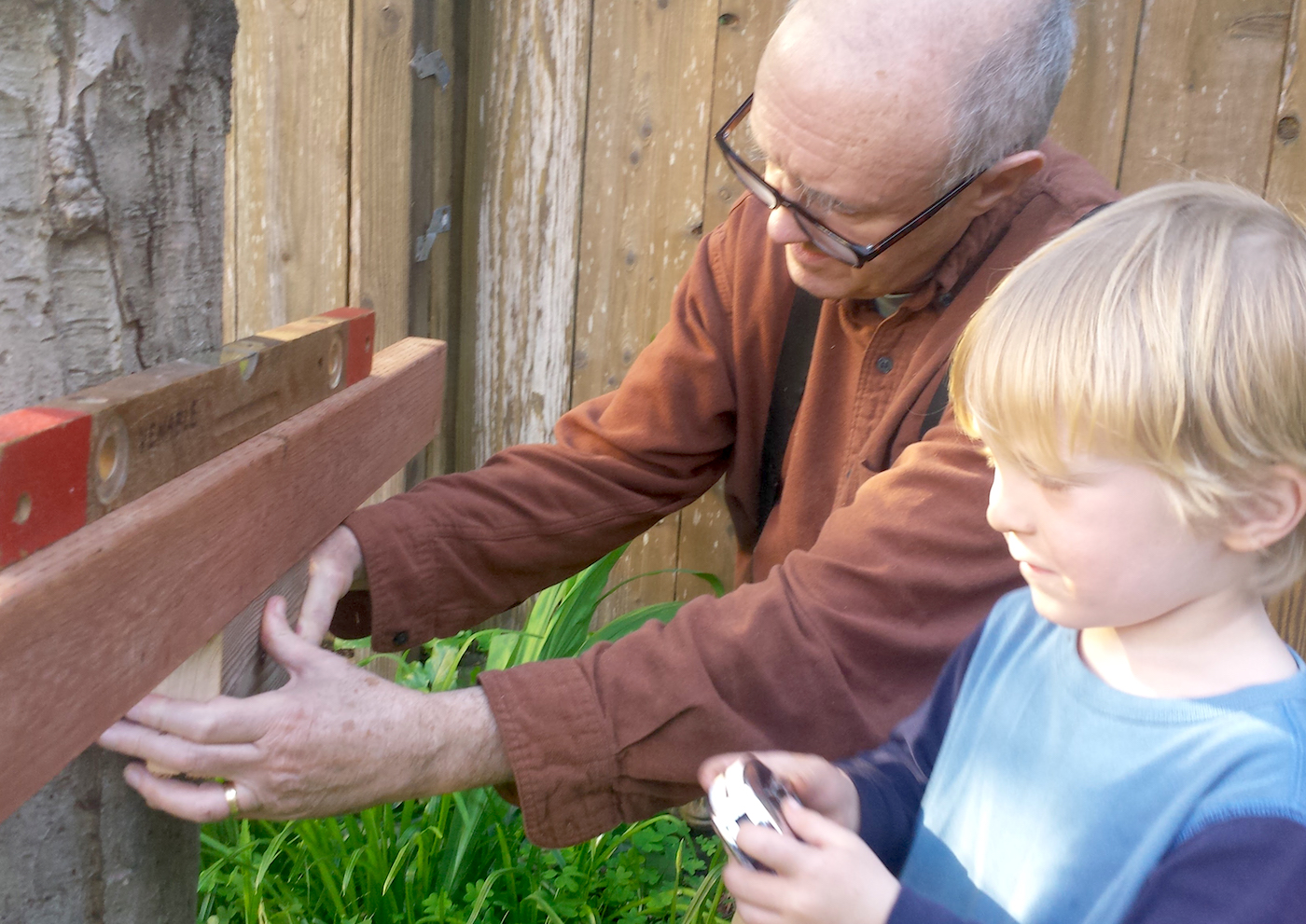
The story of this treehouse begins in my own childhood. Long ago, when I was around eight, and my little brother was maybe four, my parents planted an apple tree in the backyard. Just to give a little shade (my mother’s wish), and bear fruit for pies (for my father). We didn’t spend a lot of time in the garden, but every now and then, my parents had an idea that might motivate our being out there more. To my brother and I, this tree was the best idea yet. Because to us, a tree in the backyard meant only one thing.
Treehouse!
My parents explained that this tree would be a sapling, too small for treehouse or even climbing. When the tree arrived, I could see their point. It was about my height, its trunk the width of my wrist.
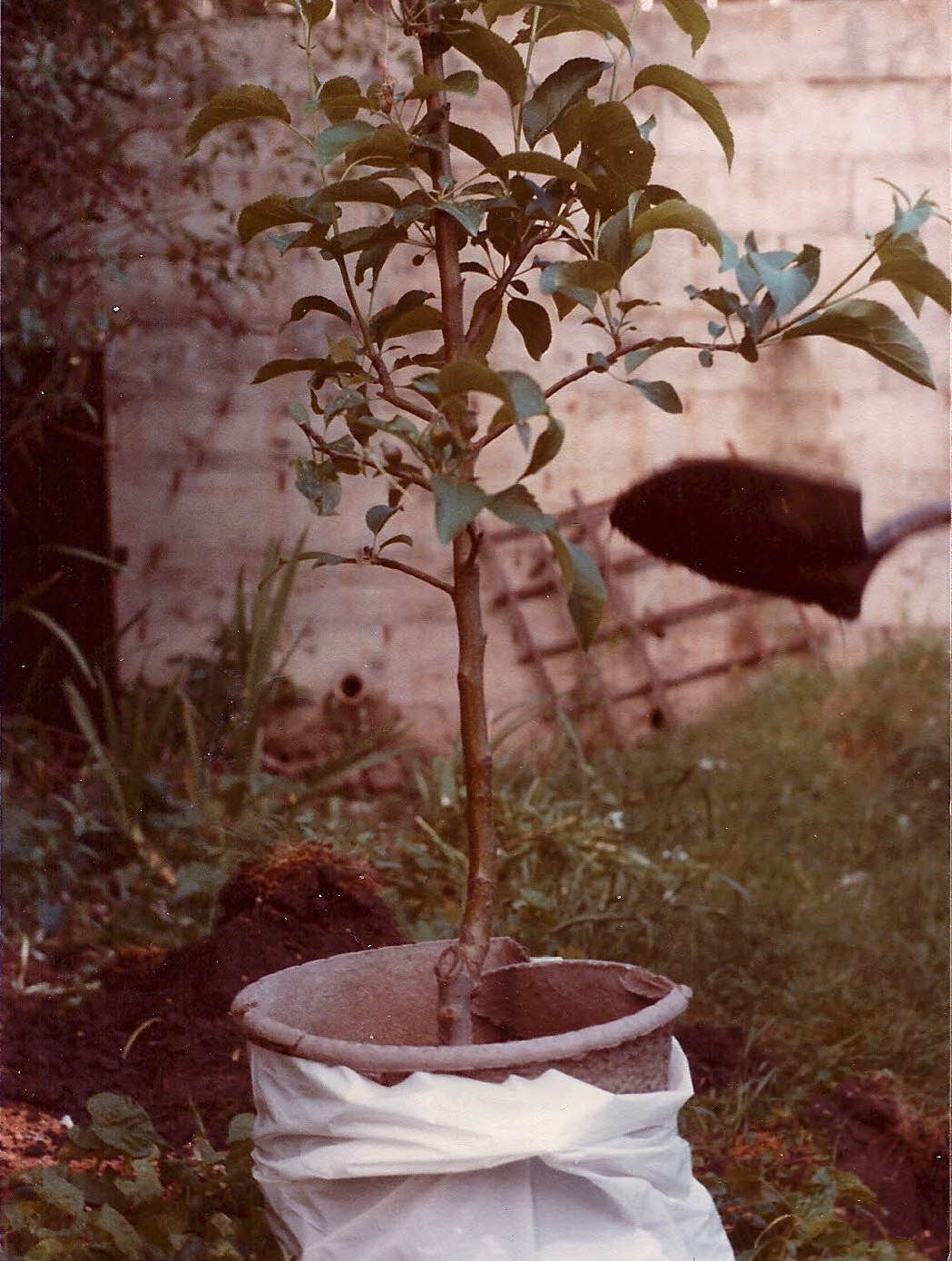
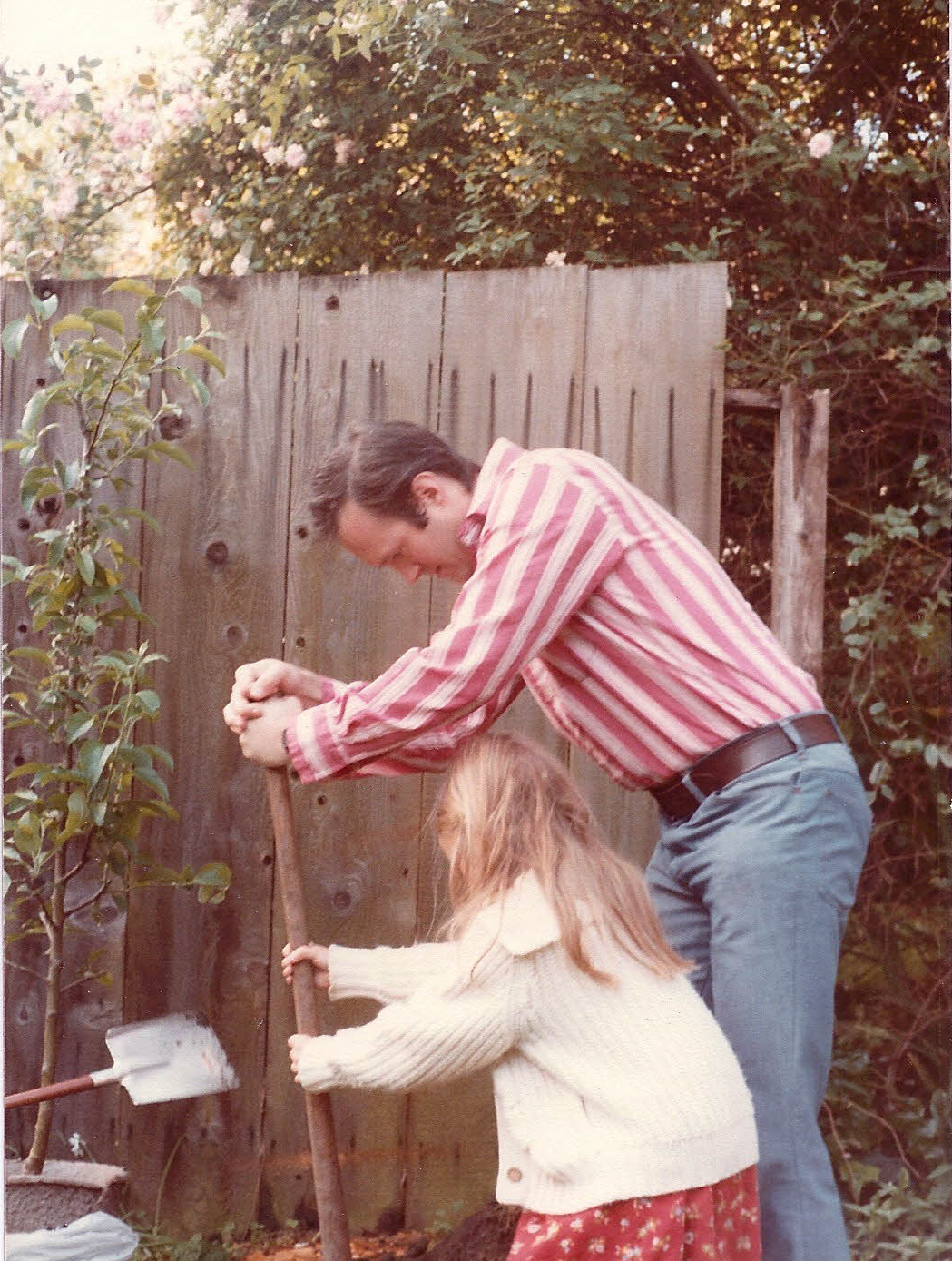
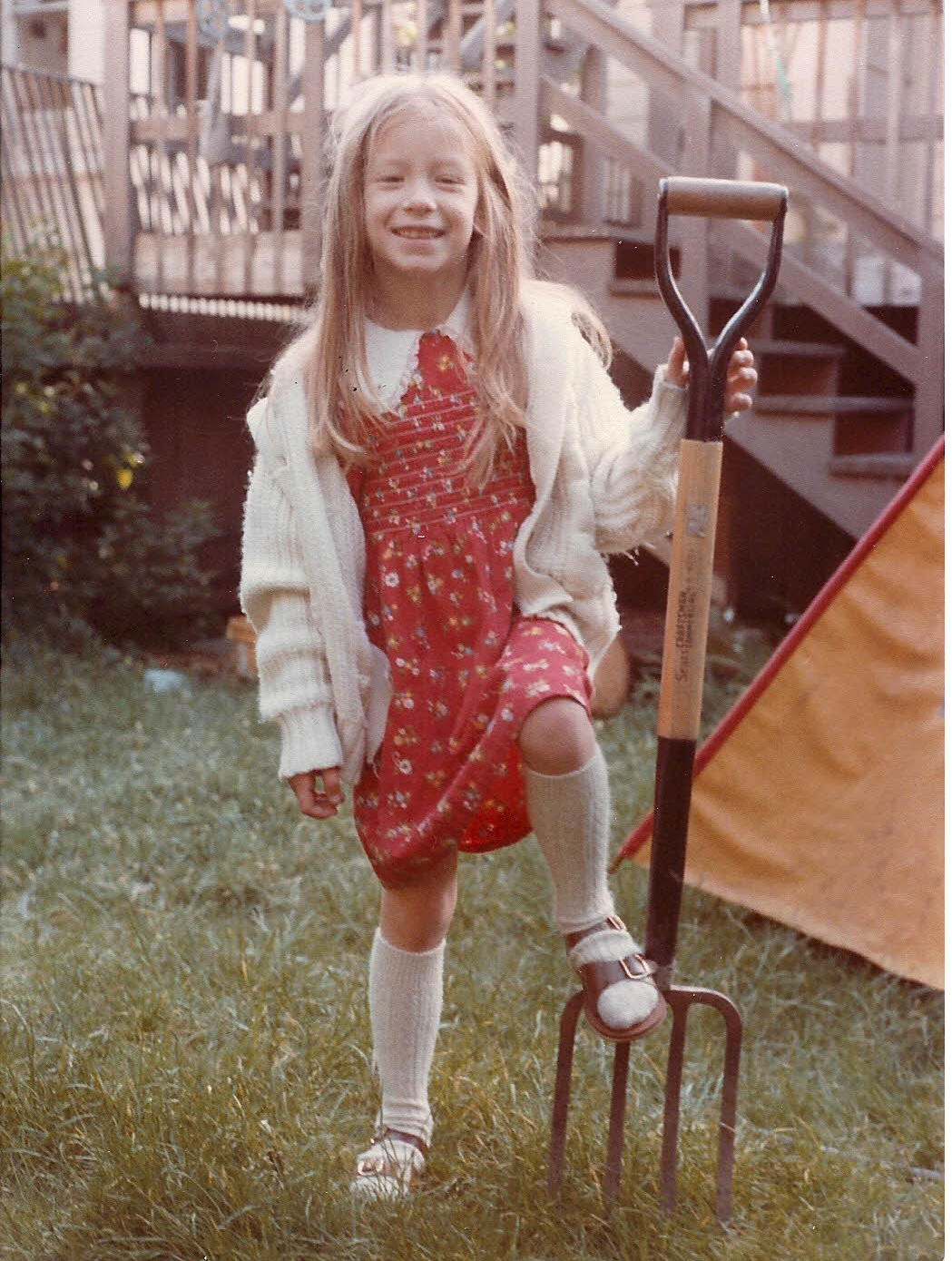
“Won’t it grow?” we asked, hopefully. “When will it be ready?”
“Probably in about thirty years,” my father chuckled.
Well… He was right!
Today, thirty-two years later, construction is underway. Wow. That same tree, now a grandmother. Our apple tree. In my own childhood, we never did spend more time out in the garden. But all those years, the tree grew quiet alongside us. She’s been through a lot. There were her years of relative bounty, when she gave enough golden delicious apples for a pie or two, and my father became famous for those pies. Recent years have been harder. Several droughts took their toll on her. In her thirst, she lost the ability to bear apples. These days, in her leafy seasons, her leaves are white and crawling with aphids. But today, watching my children play happily around her now thick trunk, sunlight playing in her still winter-bare branches, I can see her for the miracle she is.
I’m too big to fit in the treehouse now, but I think it makes me even happier that my children will be the ones to experience this. They’ll know every nail, every crack. They were involved in its planning, and gave suggestions. “Can it have a ladder, grandpa? Can it have a railing? A roof?”
As I watch them, I do well up a bit, feeling the preciousness of these moments together with both my young children and my aging parents. This is the kind of afternoon that I feel grateful I’ve lived long enough to see.
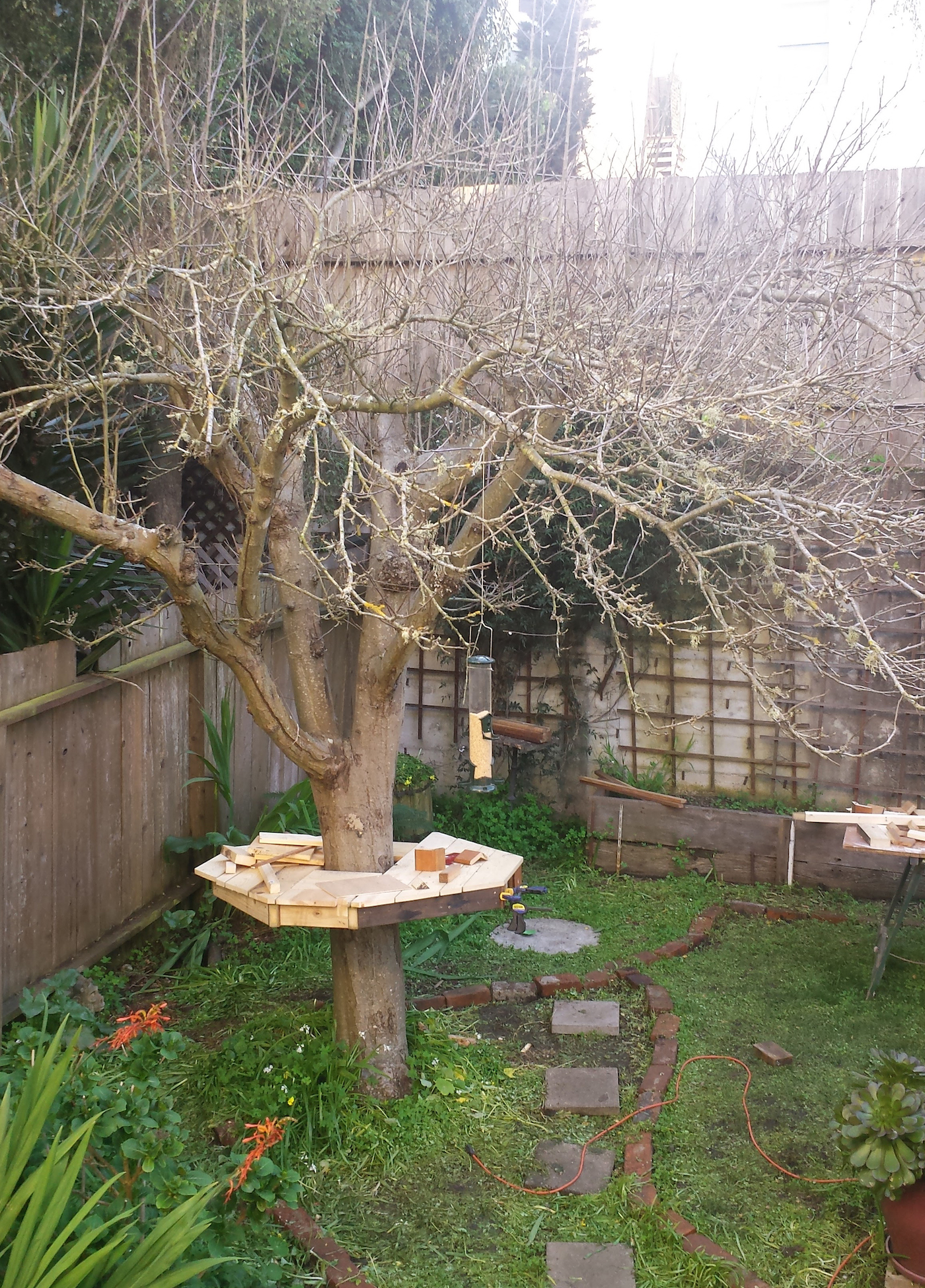
Your Family Culture
As I think about it, I realize this treehouse is held up by more than a much-loved, aging apple tree. This treehouse is also built on a family value. It’s a value I learned from my parents, while growing up. In our family culture, it was one of the values we lived by. I learned this value, alongside all the other things I learned in childhood, because it was the common theme of many of our family activities. I learned the value of building things with my own two hands.
It’s interesting what happens with a value like this, over time. Eventually, it becomes an identity. Something you take pride in. One of the things, even, that makes you you. I’m Noe, and I like to make things. It’s not just an individual identity, it’s a group identity, too. Something that anyone in our family could say about all of us together as a group:
We are a family of makers.
It bears mention that neither of my parents were professional artists or crafts people while we were growing up. It was just… something pervasive. Something in the air, even. It was thread that wove through everything. When I was little, my mother always had some sewing project underway for us children. A doll she was sewing from a pattern… A miniature Ergo (called a Snuggli back then) just like the one she carried me in. My father’s specialty was halloween costumes– outrageous, wild, bulky things we carved out of the foam of old couches.
Every family has a family culture. Your family culture is made up of the values your family lives by. But those values may be more or less conscious for us. When we take a conscious look at our family culture, the things we do regularly, and how we live with and treat one another, and to see how it aligns with our most deeply held beliefs, we can begin to shape something that has enormous influence on our children’s wellbeing, and our own. A strong family culture creates the safe container where everyone’s best selves can shine through.
So today I want to talk to you about how to recognize and shape your own family culture.
The first step is to identify the values your family currently operates out of. To do this, complete this sentence: “In our family, we ________.” Look especially for things that are positive and aspirational. Maybe you don’t do these things all the time, but you’d like to. Try to come up with a list.
As you do this, you’ll find the things you come up with fit into two categories.
- Things you do regularly. For example, “In our family, we spend Saturdays outdoors.” “In our family, we make pancakes every Sunday”
- Who you are (or strive to be). “In our family, we are kind.” “In our family, we take care of each other.”
The example I gave, “In our family, we know how to make things,” is a little of both. A little what we do, a little who are and strive to be– makers.
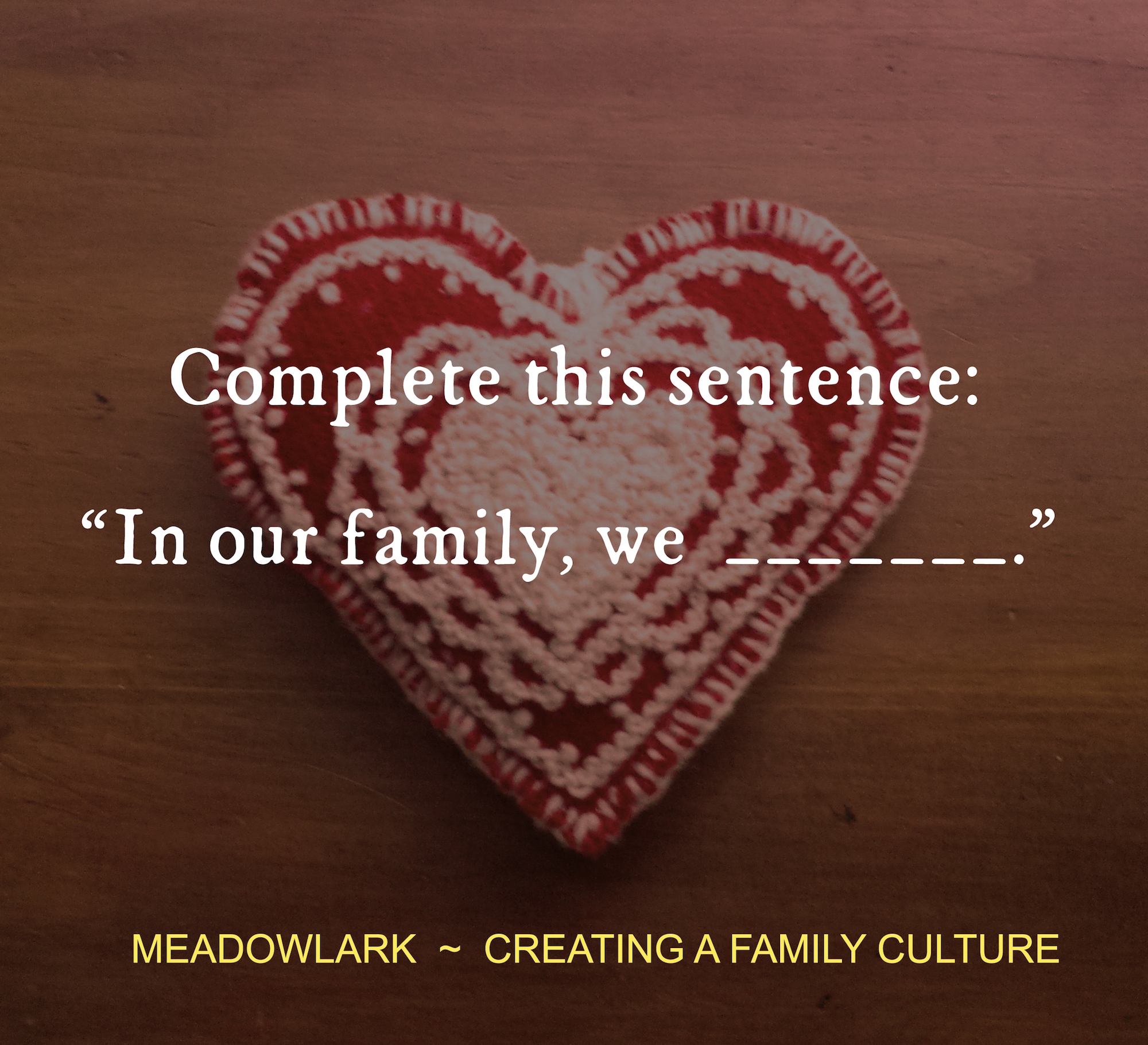
Now look at your list. Which things are most important to you? Do you see any ways you could future nurture the expression of these values in your family life?
When thinking about how to nurture your own family culture, it’s important to think about where you started. The family culture we grew up in may hold the seeds of of what we want to establish with our own children, and there are probably also places we’d like to do things differently. In this next exercise, we’ll think about our family culture of origin, and examine where it resonates with, and diverges from, the kind of family culture we want to maintain today.
- Think back to your childhood. What was your own family culture like? Try using the same sentence: “In our family, we used to _____.” Name all the values you can think of, positive and negative. If the values feel a little hard to grok, start by looking at the things you did regularly, and see what values are implied in those activities.
- Now think about your life with your own children. Which of these values do you want to carry forward? If you identified any negative patterns, can you identify a positive, opposite value that could galvanize your efforts to transcend these patterns in your own parenting?
- Finally, choose one value, maybe two, that stand out as most important, and see if you can create one concrete daily ritual that will help nurture these values in your family life. This should be something simple enough that you can do it often, ideally every day. It could be something that involves your child, or, if your little one is still too young to participate, it might just be something you do on your own. Maybe every day, while you’re brushing your teeth, you take a moment to ask yourself a simple question– “Where can I nurture compassion in my family life today?”
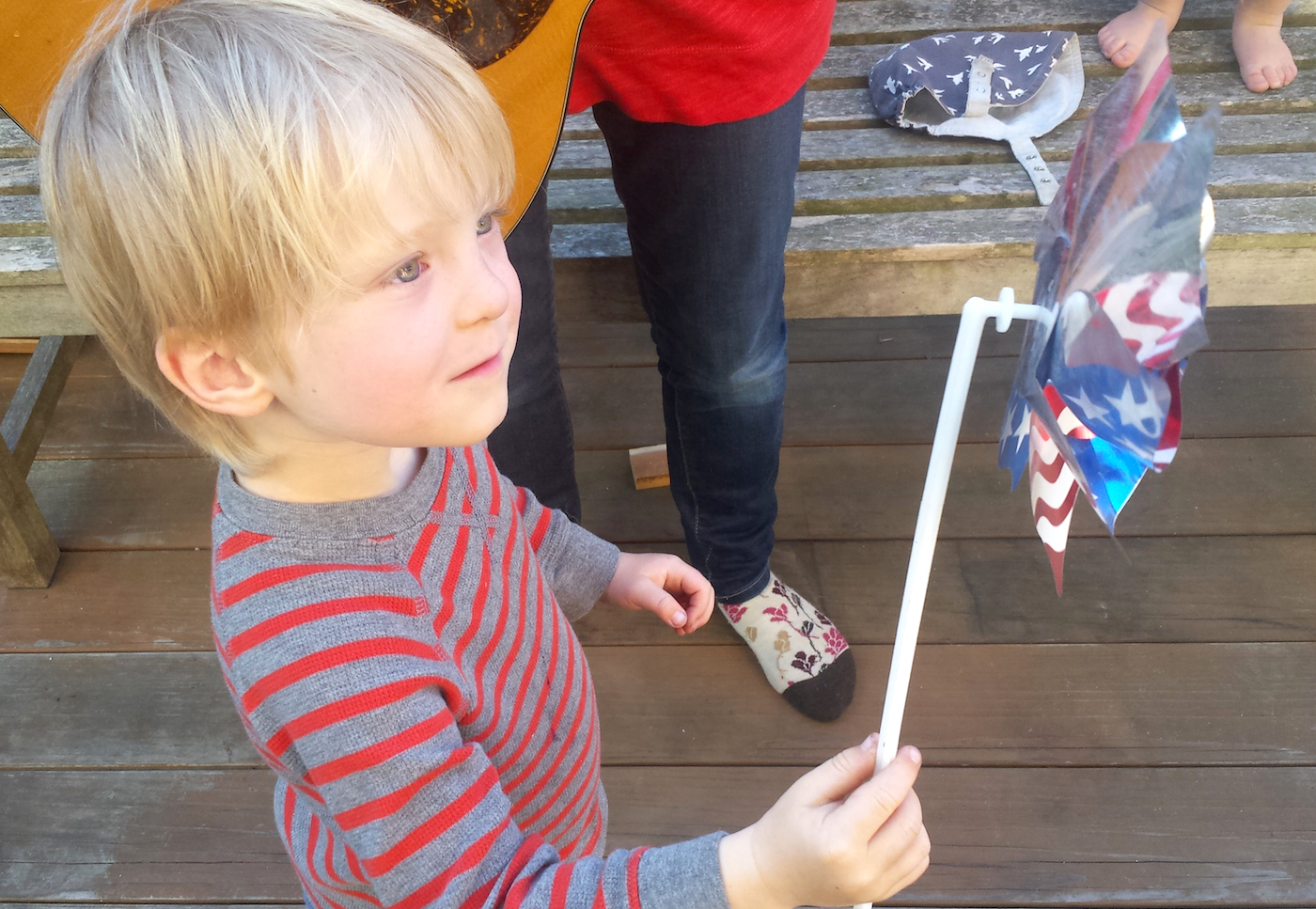
One of my colleagues at Golden Bridges School has a sweet example of one such ritual from her family life, and I liked it so much we’ve incorporated the ritual, (and the value!) into ours. That’s why it’s nice to talk about these things. Because it’s wonderful how we can inspire each other.
This colleague explained that in her family, the most important value she and her partner want to impart is “in our family, we are kind.” So every afternoon, when their daughter returns from pre-school, they find a moment to check in. She asks her daughter two questions:
- “Who was kind to you today?”
- “Who were you kind to?”
Rituals like this can add something of deep value to your day with your child. As Kim John Payne writes in his wonderful book, Simplicity Parenting, in the midst of a busy life, they create little islands of calm and connection. You can also imagine the cumulative power of a ritual like this. Repeated daily, over time, these kinds of moments nurture the development of your child’s inner moral compass— a point of orientation that will serve them throughout their lives.
So I’d love to hear from you!
What value feels the most important to you, right now?
What ways are you finding to nurture this value in your family life?
And finally, I want to share this song with you. This one isn’t so much about values, but it is a great song for building tree houses. Actually, it needn’t be a treehouse. It’s a great song to sing while building anything. Pillow forts, tents, even tarp shelters, like the one we’ll be setting up outside in Glen Canyon when my outdoor Waldorf class, Apple Star, starts up again.
This one is from my parents generation– It’s called “Let Us Come In”, by Malvina Reynolds.
For more ideas about creating a family culture, check out these two books: Simplicity Parenting, by Kim John Payne, and Heaven on Earth, by Sharifa Oppenheimer
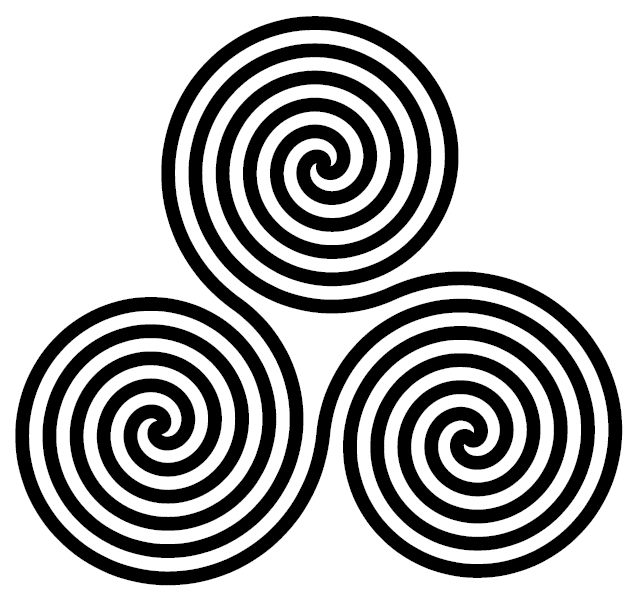
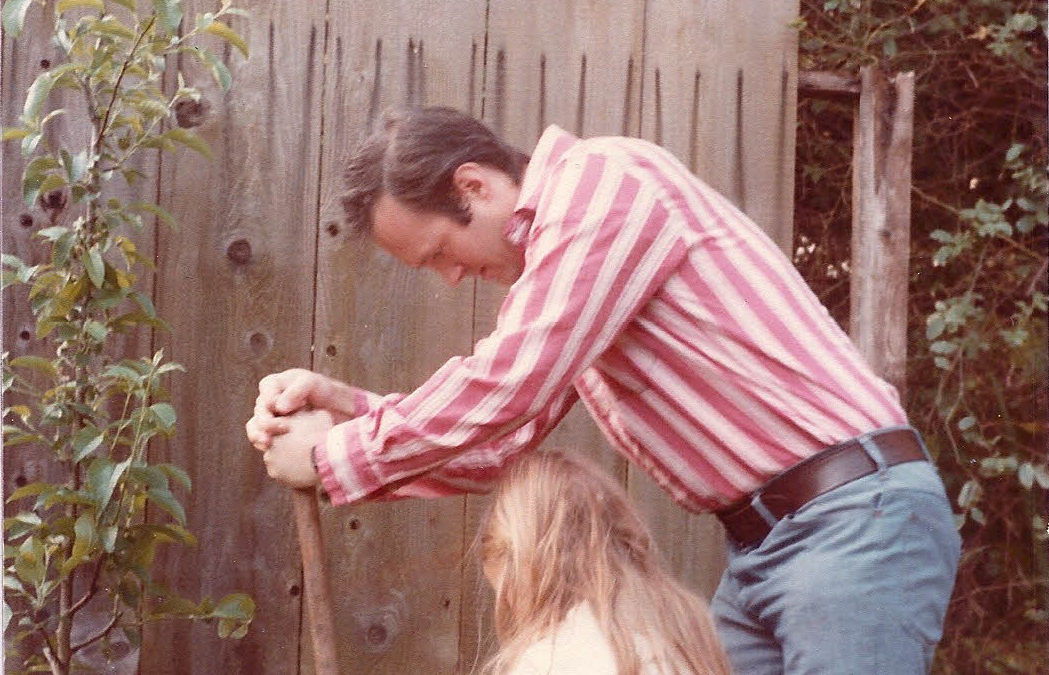
In our family we create a home for each other
Oh, I love this. Thank you, Leah!